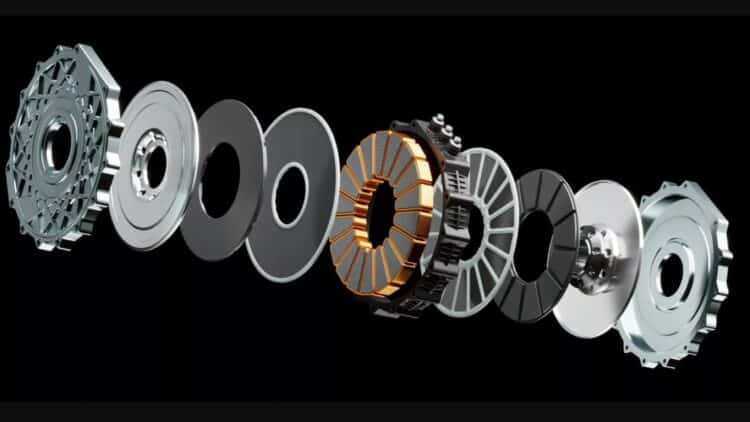This new axial-flux marvel is contributing to the ongoing rise in this technology. This new piece of innovation is contributing to a new era of electric vehicles (EVs), which are more energy-efficient. The past decade has seen the passenger vehicle industry put a significant amount of effort into producing advanced electric engine solutions, amidst an ongoing focus to transform the transportation industry to reach carbon-neutral goals by reducing its reliance on fossil fuels.
The role this new axial-flux marvel plays in electric solutions
Today, the majority of electric vehicle solutions rely on radial-flux motors to operate. This technology works by way of a magnetic flux moving outward from the center. Axial-flux motors, on the other hand, are flipped onto their side, meaning that the magnetic flux flows parallel to the motor’s axis. This creates a more compact design for automobile engineers to use in their electric solutions, allowing for increased torque and power from a smaller motor.
Generally, axial-flux motors are associated with hybrid sports cars, where space, weight, and cooling efficiency are critical to the operations of these vehicles. However, this technology is now starting to be seen in regular passenger vehicles, with this company poised to add another layer of competition to the electric vehicle market.
This company pushes for new axial-flux technology in EVs
In the past decade alone, EVs have risen dramatically, along with exponential advances in their associated technology. While global sales have stalled in recent years, automobile manufacturers remain, for the most part, dedicated to this technology as the future the passenger vehicle world is heading towards in order to play their part in contributing towards a more sustainable world.
As part of these contributions, including new axial-flux technology in passenger EVs may improve these vehicles’ energy outputs and efficiency. Recently, axial-flux electric motor developer YASA released a vehicle prototype with an output of 737hp, weighing in at just over 13kg, providing an impressive power-to-weight ratio of 42 kW/kg.
“…we believe we unofficially (and a little accidentally!) achieved the highest power density** ever recorded for an electric motor in it’s class…” described YASA CTO Tim Woolmer on his LinkedIn profile in August, 2025.
While YASA has generally reserved its axial-flux technology for hybrid supercars, such as the Lamborghini Revuelto, Ferrari SF90 Stradale, Lamborghini Temerario, and Ferrari 296 GTB, this technology is also incorporated into Mercedes-Benz EVs after the German company acquired YASA in 2021. The technology features in the Mercedes-Benz AMG GT XX Concept, contributing towards a total output of over 1,000 kW (1,360 hp).
Automobile companies continue to improve electric engine offerings
Across the globe, automobile companies are continuing to refine and expand their electric vehicle and engine offerings for their consumers, demonstrating a commitment towards sustainability while highlighting their advanced engineering capabilities. While other alternative engine solutions are also being seen on the road, such as the hydrogen fuel-cell engine and biofuel technology, the electric engine remains the preferred favourite by both developers and consumers. However, in order to increase widespread adoption of this technology, stakeholders across disciplines and industries need to work together to assist with the implementation of supporting infrastructure for electric engine technology.
Mercedes-Benz’s local competitor, BMW, has also been no stranger to improving its alternative engine solutions technology. While the company recently announced that it will not be developing an electric motorcycle anytime soon, the company remains committed to its electric scooter outputs and EVs, as well as recently announcing that it will be working with Japanese vehicle developer Toyota to develop the company’s first hydrogen fuel-cell vehicle. Toyota has long been noted as a pioneer and leader in fuel-cell technology, and this collaborative effort between the two developers highlights the need to move beyond competition for the sake of the planet.
Disclaimer: Our coverage of events affecting companies is purely informative and descriptive. Under no circumstances does it seek to promote an opinion or create a trend, nor can it be taken as investment advice or a recommendation of any kind.


